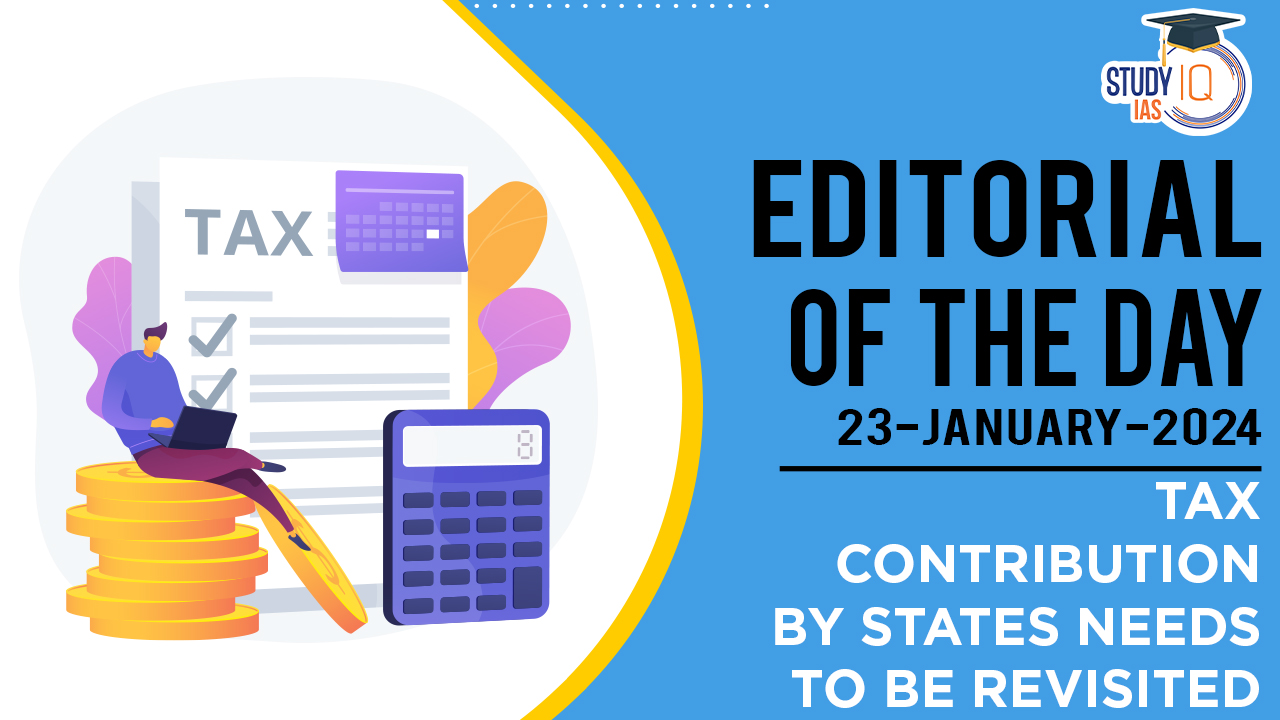Table of Contents
Context: GST offers a chance to fairly measure state contributions (via tax & fuel consumption) and reward them financially. This should be considered for future distribution formulas.
Role And Evolution Of Finance Commission
- The Finance Commissions primary role is:
- To recommend the proportion of the Union tax revenues to be assigned to States and,
- To recommend the share of each State in the assigned tax revenue.
Historical Context
- Balancing Equity and Efficiency: The Commission aims to strike a balance between equity (favouring financially weaker or high-expenditure States) and efficiency (rewarding States for effective tax collection and spending) in distributing Union tax revenue to states.
- Shifts in Tax Revenue Distribution: Earlier, States’ shares were limited to personal income tax and Union excise duties. Post-2000, this expanded to include all Central tax revenues.
We’re now on WhatsApp. Click to Join
Distribution Formula Dynamics
- Weights and Indicators: Early Commissions gave a 10-20% weight to tax collection efficiency, while 80-90% was for population-based equity indicators. Union excise duties were distributed based on consumption statistics, which were hard to track.
- Post-10th Finance Commission Changes: A unified formula for income tax and Union excise duties was adopted, with over 75% weight given to equity indicators.
- 2000s Adjustments: Efficiency indicators like tax effort and fiscal discipline were introduced, with a combined weight of around 15%.
- 15th Finance Commission Approach: This Commission allocated 2.5% weight to tax effort and 12.5% to demographic performance, with the remaining 85% for equity indicators like per capita income and population.
Advocacy for GST Inclusion in the Formula
- GST as an Efficiency Measure: GST, being a consumption-based tax, offers a stable and objective measure of a State’s tax contribution, making it a suitable efficiency indicator.
- Stability and Accuracy: GST’s unified structure ensures minimal variation in States’ tax efforts, reflecting the true economic base of each State.
- Petroleum Consumption as an Indicator: Union excise duty and sales tax on petroleum products, outside GST, also reflect States’ contribution to the national exchequer.
- Rationale for Inclusion: Both GST and petroleum consumption are stable measures of a State’s income and hence its tax contribution, justifying their inclusion in the distribution formula.
Proposal for the 16th Finance Commission
- It’s recommended that the 16th Finance Commission debate and possibly assign at least a 33% weightage to the combined efficiency measures of GST revenue and petroleum consumption in the distribution formula.


 Pariksha pe Charcha 2025, Overview, Even...
Pariksha pe Charcha 2025, Overview, Even...
 National Policy on Framework on Agricult...
National Policy on Framework on Agricult...
 How Scientists used Scotch tape to Creat...
How Scientists used Scotch tape to Creat...




















